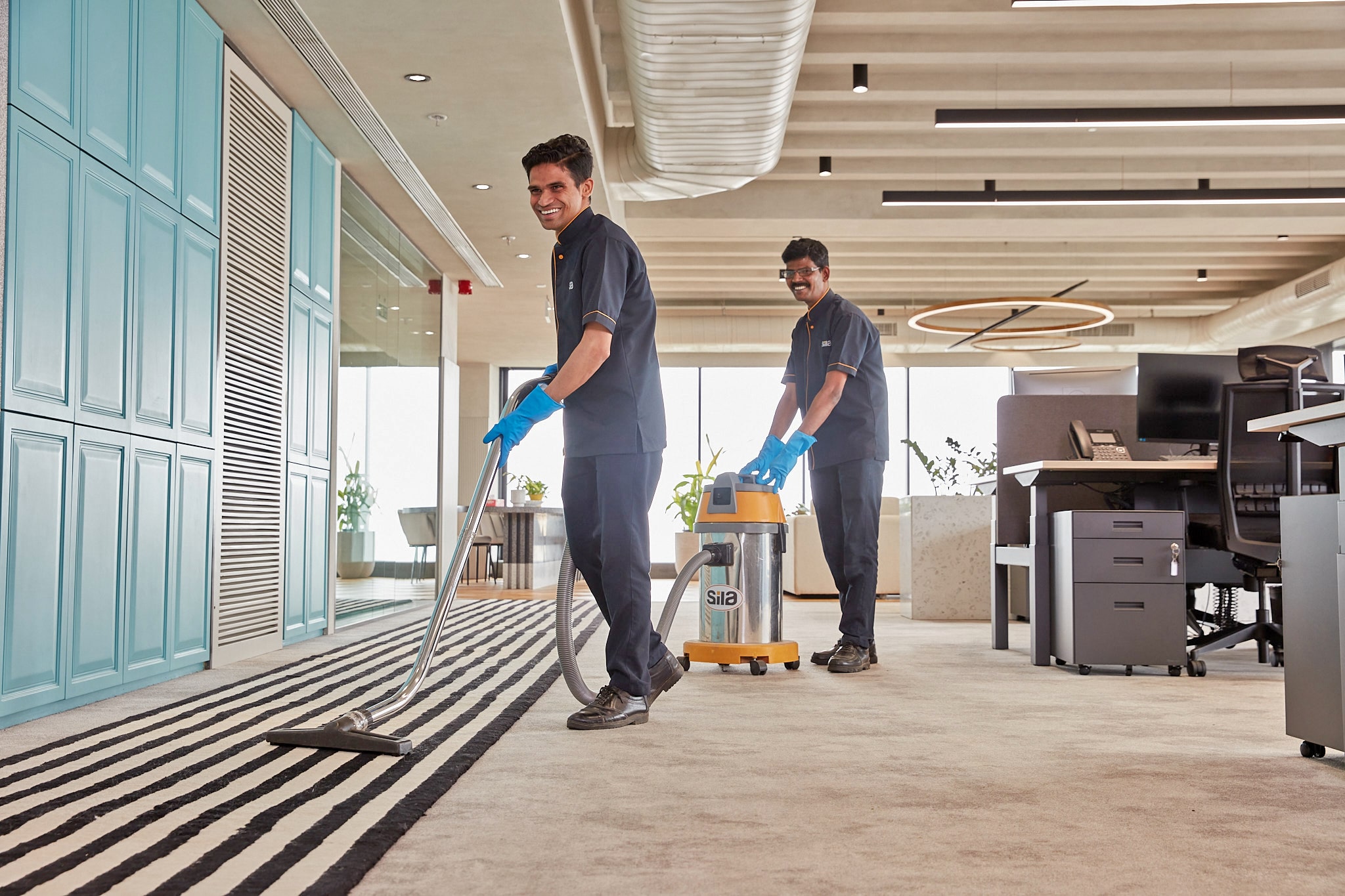7 Steps to Create a Preventive Maintenance Schedule in Facility Management Solutions
Preventive maintenance is no longer an optional practice in modern organizations—it is a necessity. Facilities across industries are under immense pressure to operate seamlessly, reduce downtime, and extend asset life cycles. This is where facility management solutions play a transformative role. By implementing a structured preventive maintenance schedule, organizations can improve efficiency, ensure safety, and cut down on unexpected costs.
In this blog, we will explore 7 practical steps to create a preventive maintenance schedule that works, while also highlighting how integrated facility management and technology-driven practices offered by leading facility management companies in India can make this process seamless.
Why Preventive Maintenance Matters in Facility Management
Every asset has a lifecycle, and poor maintenance reduces it drastically. Corrective maintenance—fixing something only when it breaks—may seem economical in the short run but leads to higher costs, safety risks, and operational delays. Preventive maintenance, on the other hand, ensures issues are identified before they escalate.
For organizations relying on facility management services, preventive maintenance:
- Reduces unexpected downtime
- Extends asset life and performance
- Improves compliance with safety and industry regulations
- Enhances employee productivity and comfort
- Optimizes operational costs
Facilities and management teams that embrace preventive schedules also improve customer satisfaction and employee morale by ensuring a smooth, reliable environment.
Step 1: Assess Your Facility’s Needs
The foundation of any effective preventive maintenance schedule is understanding the specific needs of your facility.
- Identify all critical assets such as HVAC systems, electrical units, elevators, fire safety systems, and plumbing.
- Categorize assets based on usage frequency, risk factors, and cost of repair or replacement.
- Conduct a gap analysis to identify areas where reactive maintenance is costing time and money.
Leading facilities management companies often begin with a detailed audit to map asset performance, making it easier to prioritize maintenance schedules.
Step 2: Define Clear Maintenance Goals
Once assets are identified, the next step is to set measurable goals for preventive maintenance. These goals may include:
- Reducing breakdown incidents by 30% over the next year
- Increasing equipment uptime to 98%
- Lowering energy consumption by optimizing HVAC and lighting systems
- Ensuring 100% compliance with statutory regulations
When facility services management is guided by defined goals, it becomes easier to track ROI and justify investments in preventive strategies.
Step 3: Build an Asset Inventory and Maintenance Calendar
A comprehensive asset inventory is central to preventive maintenance. This should include:
- Asset name and location
- Manufacturer details and warranty
- Last service date and upcoming schedule
- Critical spare parts required
Once the inventory is ready, create a maintenance calendar. This calendar should include weekly, monthly, quarterly, and annual tasks. For example:
- Weekly: Inspect fire extinguishers and emergency exits
- Monthly: Service HVAC filters
- Quarterly: Check plumbing and water management systems
- Annually: Electrical audits and safety compliance checks
Modern facility management solutions integrate digital tools and software to automate these calendars, ensuring nothing is missed.
Step 4: Assign Roles and Responsibilities
A preventive maintenance schedule is only as effective as the people implementing it. Clearly assign tasks to technicians, supervisors, and vendors.
- Internal staff can handle basic inspections.
- Vendors or specialists can manage advanced servicing like HVAC calibration or electrical repairs.
- Supervisors should verify completion and record documentation.
Facility management companies often provide trained manpower and specialized expertise, ensuring that preventive maintenance is executed at a professional standard.
Step 5: Leverage Technology and Automation
Manual scheduling is prone to errors. This is why digital facility management solutions are gaining popularity across industries. Tools like Computerized Maintenance Management Systems (CMMS) and IoT-enabled sensors can:
- Send automatic reminders for upcoming tasks
- Generate reports on completed vs. pending work
- Monitor real-time performance of critical equipment
- Detect anomalies before they cause failures
By embracing automation, facility management India is rapidly transitioning from reactive models to predictive and preventive strategies.
Step 6: Monitor, Track, and Optimize
Preventive maintenance is not a one-time exercise—it’s a continuous improvement process. Use Key Performance Indicators (KPIs) such as:
- Number of breakdowns prevented
- Average downtime per asset
- Cost savings achieved
- Energy consumption levels
Regular monitoring ensures your schedule remains relevant. If a certain system requires more frequent checks, adjust the calendar accordingly. This dynamic approach helps organizations make the most of their investment in facility management services.
Step 7: Train and Engage Your Workforce
Even the most advanced preventive maintenance schedule fails without employee awareness and cooperation. Training sessions should focus on:
- Identifying early warning signs of asset failure
- Reporting issues quickly
- Following SOPs for inspections
By engaging staff, organizations build a culture of accountability. Many facility management companies in India also conduct training sessions as part of their integrated facility management services, ensuring teams are aligned with the preventive strategy.
Preventive Maintenance: A Long-Term Advantage
The benefits of preventive maintenance go beyond cost savings. It strengthens compliance, improves workplace safety, and builds trust among stakeholders. With the help of facilities management companies and advanced facility services management practices, organizations can achieve:
- Higher operational resilience
- Better asset lifecycle management
- Reduced carbon footprint through optimized energy use
- Seamless alignment with ESG goals
For businesses in India, choosing expert facility management companies that specialize in preventive strategies is critical. Not only do they bring expertise, but they also deploy digital-first facility management solutions that provide measurable results.
Conclusion
Creating a preventive maintenance schedule is not just about fixing machines before they break—it’s about building a culture of proactive efficiency. By following the 7 steps outlined above, organizations can optimize operations, reduce costs, and improve long-term performance.
As facility management India continues to grow, preventive maintenance supported by integrated facility management and technology-driven facility management services is becoming the gold standard. Whether you are managing a commercial office, residential complex, or industrial facility, a structured schedule will always deliver long-term value.
In a competitive business environment, the choice is simple: adopt preventive maintenance as part of your facility management solutions, or risk falling behind with costly reactive practices.
Also Read: Compliance vs Noncompliance – What’s Best for Facility Management Solutions
FAQs
1. What Are Facility Management Solutions?
Facility management services refer to a comprehensive set of processes and tools aimed at maintaining and improving the functionality, safety, and efficiency of buildings and facilities. These services combine various operations to enhance the performance of physical spaces, ensuring they meet the needs of both occupants and property owners while promoting sustainability and seamless operations.
2. Key Components of Facility Management Solutions
- Hard Services
- Soft Services
- Energy Management
- Space and Asset Management
- Technology Integration
- Security and Surveillance
- Compliance Management
- Workforce Management
3. What are the primary benefits of using Facility Management Solutions?
- Improved Efficiency
- Streamlined operations reduce downtime and optimize resource utilization.
- Cost Savings
- Preventive maintenance avoids costly repairs and energy-efficient solutions lower utility bills.
- Compliance Assurance
- Proper documentation and adherence to regulations reduce legal risks.
4. Who should consider adopting Facility Management Solutions?
Facility Management Solutions are ideal for:
- Commercial offices
- Residential complexes
- Industrial facilities
- Healthcare institutions
- Educational institutions
- Retail spaces
5. What are the benefits of implementing Facilities Management in a business?
Benefits include:
- Enhanced productivity from a well-maintained and safe environment.
- Lower operating costs through efficient resource use.
- Improved safety and compliance, minimizing legal risks.
- Increased property value with well-managed assets.
- Better employee and customer experience through clean, functional spaces.
- Support for sustainability via eco-conscious operations.
In short, Facilities Management drives operational success and stakeholder satisfaction.
About SILA -
A Real Estate platform driven by an entrepreneurial spirit.
Our businesses include Real Estate Services which offer Facility Management Solutions, Material Handling Solutions and Real Estate Advisory. Our other business is Real Estate Development. We have a diverse client base in various sectors which include large Corporates, Real Estate Funds, Landowners and Developers.
Over the last decade, SILA has scaled efficiently, managing over 350 million square feet of assets, with over 30,000 employees pan India. The platform is backed by Norwest Venture Partners and Samara Capital Group in our Real Estate Services and Development arms, respectively.
SILA is one of the best property management companies in Bangalore, Mumbai, Delhi, Chennai, Hyderabad, Pune & more.
SILA is among the top facility management companies in India, offering comprehensive Facility management services. As a leading facility services management company, SILA provides tailored FM solutions, including housekeeping services in Bangalore. Leveraging our expertise, we ensure seamless property management for clients nationwide. Whether you require housekeeping agency support or specialized facility management solutions, SILA delivers excellence in every aspect of your Housekeeping services in India, property’s upkeep and maintenance. With a proven track record in Facility Management India, SILA continues to set benchmarks in efficient and sustainable property management.
About Author -

Aniket Sheth
The insightful content in this blog is curated by Aniket Sheth, our esteemed Senior Vice President of Operations. With an impressive professional journey spanning over 13 years, Aniket has held key positions at prestigious brands, showcasing his exceptional leadership skills.
Aniket’s educational background is marked by an MBA from Cornell University, which laid the foundation for his successful career. He began his professional journey at EY in New York, contributing significantly to enhancing and implementing engagements for Fortune 500 companies.
Aniket’s strategic acumen, proficiency in asset management, and forward-thinking innovation have been instrumental in helping companies streamline their operations and achieve substantial cost reductions. His wealth of experience brings a unique perspective to the world of facilities management, making his insights invaluable for businesses seeking operational excellence.


